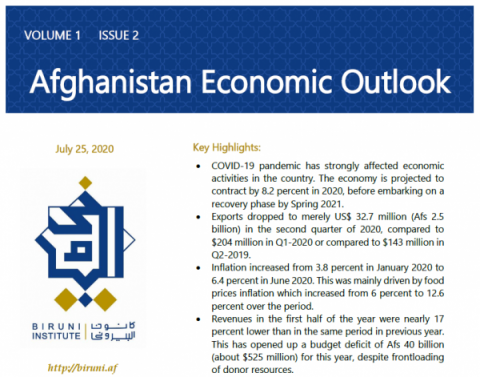Key Highlights of the Report:
- COVID-19 pandemic has strongly affected economic activities in the country. The economy is projected to contract by 8.2 percent in 2020, before embarking on a recovery phase by Spring 2021.
- Exports dropped to merely US$ 32.7 million (Afs 2.5 billion) in the second quarter of 2020, compared to $204 million in Q1-2020 or compared to $143 million in Q2-2019.
- Inflation increased from 3.8 percent in January 2020 to 6.4 percent in June 2020. This was mainly driven by food prices inflation which increased from 6 percent to 12.6 percent over the period.
- Revenues in the first half of the year were nearly 17 percent lower than in the same period in previous year. This has opened up a budget deficit of Afs 40 billion (about $525 million) for this year, despite frontloading of donor resources.
- An 8-percent economic contraction increases unemployment rate from 23.9 percent in 2017 to 37.9 percent in 2020. If “underemployment” is also taken into consideration, the figure would be as much as 53.5 percent. In nominal terms, this means that nearly 4.8 million people will be either unemployed or under-employed by the end of 2020, which is an increase of 1.5 million people compared to the 2017 levels.
- The need for an emergency support program to households is enormous, and the government’s approach to mobilize $300 million required for the REACH project by reallocating resources from the existing development portfolio is justified. However, the type and the structure of the program, which currently relies on in-kind distribution of food, needs to be seriously reconsidered for the reasons of efficiency, effectiveness, value-for-money, and transparency.
Download the Report: Afghanistan Economic Outlook, Issue 2, July 2020



